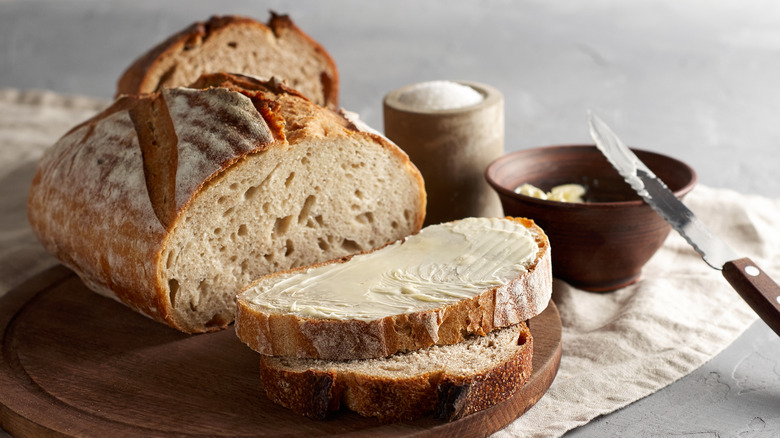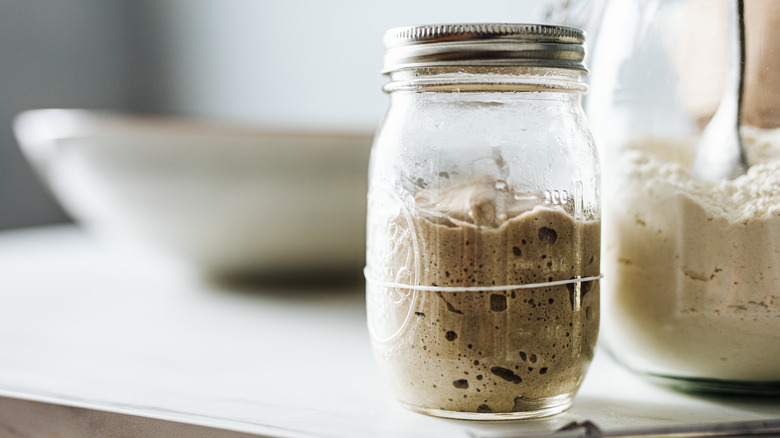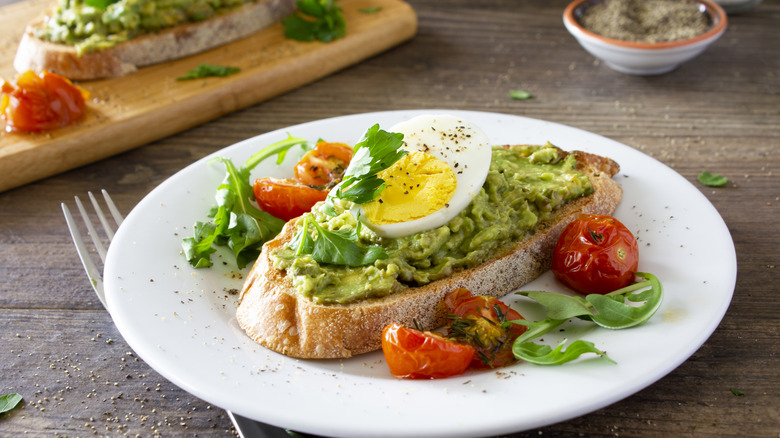Your Store-Bought Sourdough Bread Might Be Sourfaux
In 2015, a United Kingdom-based campaign called the Real Bread Campaign (RBC) began promoting a mission to define true, authentic sourdough bread and teach consumers how to spot so-called fakes. The project revealed that dozens of small- and large-scale bread producers selling "sourdough" bread were actually producing loaves that were not prepared like sourdough, nor behaved like it — making them "sourfaux," as said by RBC coordinator Chris Young.
As outlined by the RBC's webpage on sourdough, real sourdough bread should list just three ingredients on the label: flour, water, and salt. What normally isn't listed on packages of bread is sourdough starter, a living, breathing mixture of fermented flour and water. The fermentation process creates yeast and special lactic acid bacteria, which helps the bread rise and gives it that sour flavor.
The RBC found that many breads labeled as "sourdough" were made with commercial baker's yeast and rising agents like baking powder — not sourdough starter — thus making the loaves imposters. Considering that sourdough is often assumed to be artisanal and made with more care, and is therefore sold at higher prices, the RBC stated that consumers had a right to know if they were buying standard supermarket loaves with a sourdough label slapped on. The RBC even campaigned for changes in UK law that would require breadmakers to disclose if its sourdough is "real" or not, among other regulations for terms like "freshly baked" and "wholegrain."
How to identify real sourdough bread
As of February 2024, the RBC's proposed bread labelling laws have not come to pass. In the meantime, you can use some tips to spot "sourfaux" and avoid paying extra for bread that merely appropriates the name. Real sourdough comes down to more than ingredients — to pro bakers, "sourdough" refers to a specific baking process, not just a type of bread.
Bakers who create sourdough are skilled at what they do: Starters must be fed and nurtured; loaves are typically made in small batches; and they take more time to produce, which leads to a higher price. "Sourfaux" loaves is cheaper to manufacture, with no need to maintain starters or monitor fermentation, yet consumers pay a premium for what's written on the label. The RBC asserts that not even flavor can tell you if a loaf is authentic. Instead, they advise to check the ingredients.
The best sourdough doesn't contain preservatives or additives, and is made with only flour, water, and salt. Of course, there are loaves with add-ins like fruits or cheese, but be on the lookout for things like commercial yeast, baking powder, vinegar, and yogurt. All of these are shortcuts to either making the bread rise or making it taste sour, which should be the starter's jobs. Bakeries selling bread made in-house often don't include ingredient lists on their packages, so just ask an employee what goes into the bread. A reputable bakery will gladly give you an honest answer.
Real sourdough is worth seeking out
Say you've brought home a loaf of so-called sourdough from the store, and you've already discarded the outer packaging that listed the ingredients. How can you tell if what you have is authentic? Certain qualities of a given loaf can help you determine if your sourdough is likely real, or a fake.
The lack of preservatives or additives in authentic loaves make sourdough appealing to many, but this means the bread doesn't last long. It only retain its top quality for a few days when left out on the counter. If your "sourdough" is a week old or more, yet it remains almost exactly as it was when you bought it, it's probably a highly-processed piece of sourfaux. The best way to store your sourdough if you're not eating it right away is to freeze the bread. Sourdough freezes extremely well, staying in prime condition for months. If you freeze and thaw your sourdough, but find that it has degraded greatly in quality, it's likely not sourdough at all.
Of course, one way to ensure your sourdough is authentic is to make it in your own home, a practice that exploded in popularity during the 2020 emergence of Covid-19 and concurrent lockdowns. Aside from sandwiches and toast, sourdough bread makes delicious stuffing, crostini, bread pudding, and Italian panzanella salad. Once you have a taste of real sourdough, you'll never want to be fooled by "sourfaux" again.



